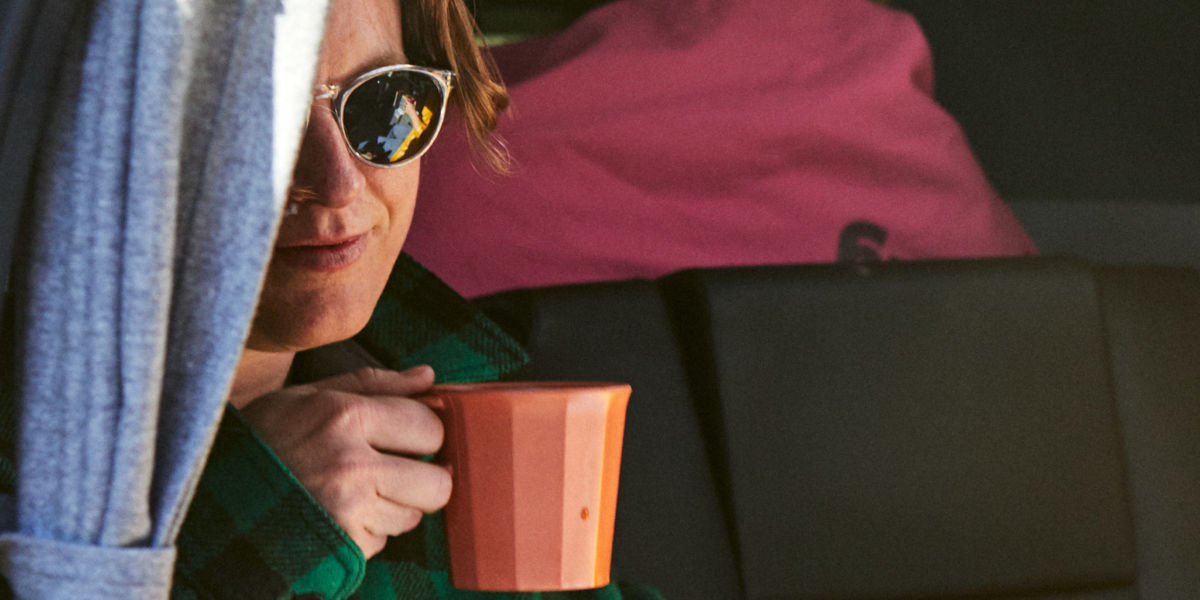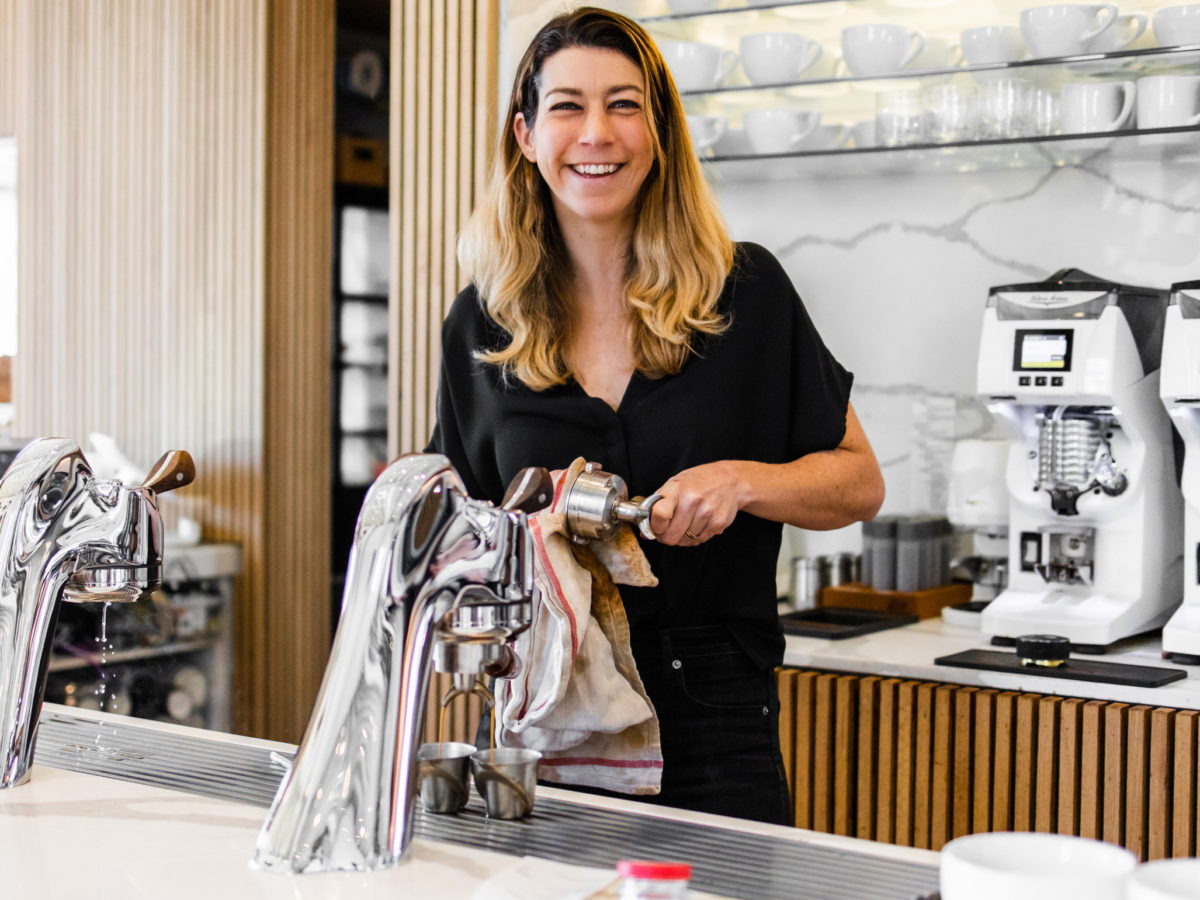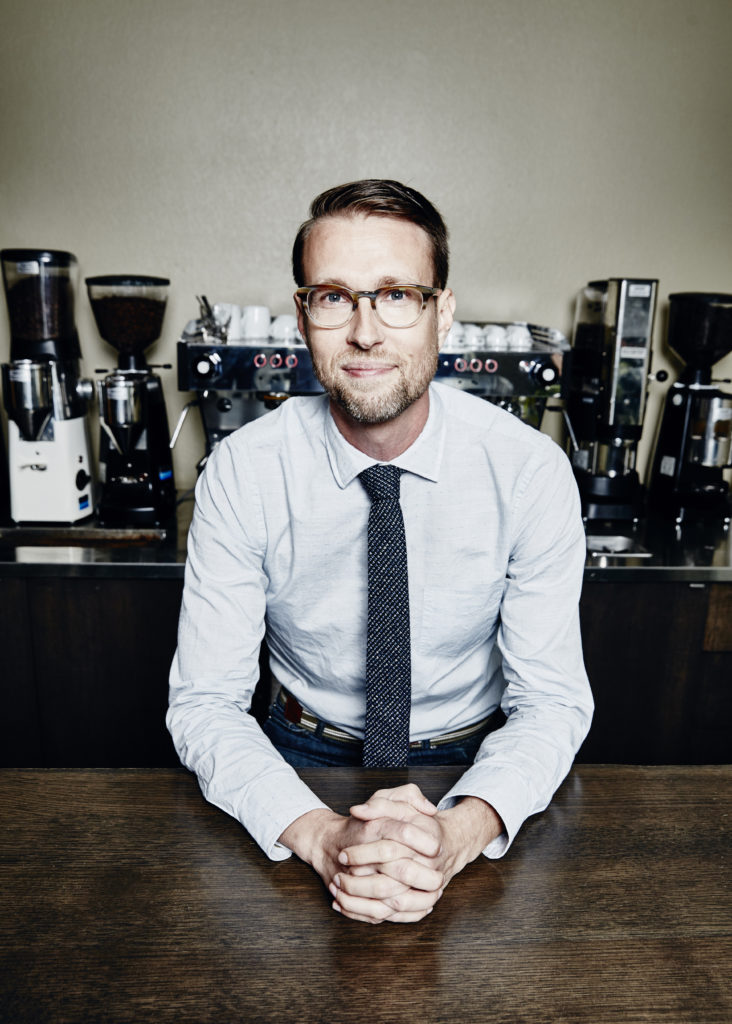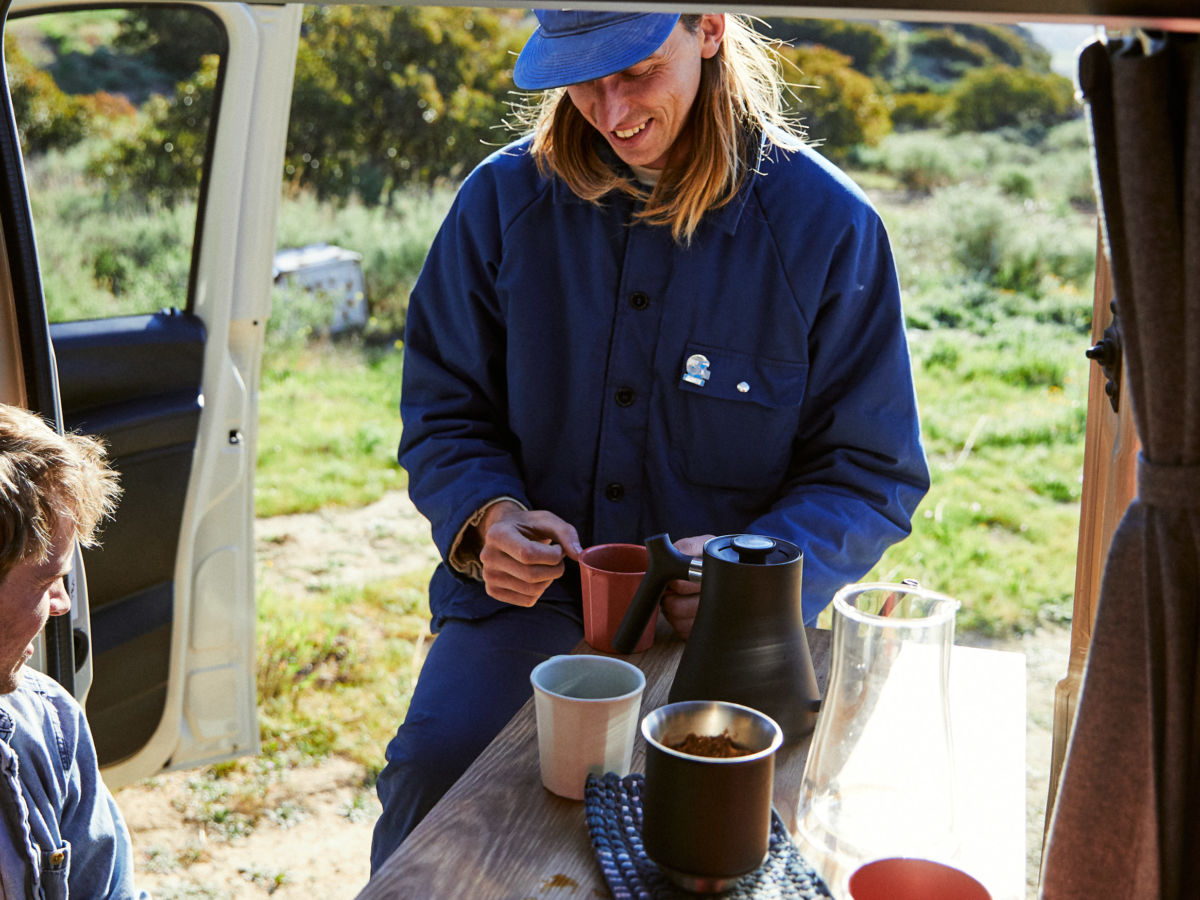
All the Coffee Gear You Need to Make Hugely Better Coffee
Brewing a cup can be a reward in itself. Here’s how to turn your daily habit into a lifelong passion.

With a little know-how, coffee is one of those pursuits that you can enjoy no matter where you sit on the spectrum of expertise. Great raw materials and a little bit of technique go a long way toward a great cup. But with each new bag of beans, each new threshold of knowledge or piece of equipment, you might find yourself being pulled further and further into the cup.
Just ask Scott Callender, who loved espresso so much he started giving it away for free from a counter out of his Napa kitchen. “I started putting a menu in the window, and next thing I knew, I’d throw open my window to find 20 people lined up. To this day, it was one of the purest expressions of what I wanted to do.”
You won’t find Scott in Napa any longer, but that’s for good reason: The pursuit of coffee pulled him in so thoroughly that he’s now living and working in Seattle as a VP with high-end coffee powerhouse La Marzocco.
Like Scott, many of the experts we spoke with started with a simple love of coffee, and sharing that love with others.
“I started drinking coffee at 5 years old with my father,” says Andrea Allen, the 2020 United States Barista Champion. “People see this elaborate setup at their favorite coffee shop and they get intimidated. They think it’s too big, expensive, and hard to use. That’s because they’re looking at a commercial style setup. But you can actually make good coffee at home even without much coffee experience.”

Lucky for you, Andrea and her colleagues at Onyx Coffee are now teaching virtual barista classes for Breville over Zoom. Log on, and for about $100 they’ll coach you through the finer points of pulling the perfect espresso, steaming milk, and crafting pure and delicious pour-over coffees.
For Jerad Morrison, co-founder of Sightglass Coffee in San Francisco and Los Angeles, inspiration came from the Italians. “My genuine interest in coffee began when I was 18 and working as a barista at the family-owned Torrefazione Italia in Seattle,” Jerad recalls. “Their approach was very traditional and had strong cultural and social emphasis, so the preparation was classic and pure—no additives, only espresso and frothed milk. It was the first time I realized that coffee was a medium that could be worked with, and, if done thoughtfully, could inspire the person it was prepared for.”
From caffeine delivery mechanism to cultural and social connector: That’s how deep in our veins this simple fruit extract runs.

As you go deeper into the coffee world, you may find yourself doing the math on some of the scaled-down espresso machines that will deliver café-quality drinks in the home. At $6 per cup for some speciality coffees—not to mention the immunological exposure to a trip out of the house—there’s never been a better time to invest in a quality at-home espresso machine.
But great coffee is possible even without a pricey setup. Just ask Erika Vonie, the 2017 New York Masters of Coffee winner, who now works as an independent consultant across a range of different coffee businesses.
“Specialty coffee can be for anyone,” says Erika. “Whatever parts of coffee that you like will help drive you forward. You can learn about freshness, countries of origin, agronomy, climate, harvest, seasonality, treatment, and so on. What flavor profiles, what strength of caffeine, what sort of method are you interested in perfecting. It creates an infinite number of avenues to explore.”
Sound like a lot? It is. But that’s why knowing how to make great coffee is a practice, a journey, rather than a race. You’ve got the rest of your life to get there. So let’s start small.
1. Match Your Bean to Your Method
There’s more to a blend than light or dark roast. “Coffee is like fashion,” says Scott, “and the level of roast comes in and out of vogue. We’re just coming off a period where roasters were vying to roast the lightest. If you’re enjoying a pour-over, lighter roasts will allow heirloom coffees to shine through. It’s talking about coffee like wine, for its own sake—the farm, the variety, whether it’s grown on the side of a volcano.” Whether you’re able to identify flavor compounds—floral, nutty, rose hips—is part of your individual journey. But if you take your coffee with milk, or you’re making espresso, you might opt for a darker roast.

2. Buy Fresh Beans, and Treat Them Well
The quality of your beans has a major impact on the quality of your coffee. “The farther out you get from the roast date the more flavor components and the more acid you lose,” says Andrea. Brew right away, however, and the coffee might not have had a chance to off-gas. If you’re serious about your beans, buy an air-tight container and keep them out of the sun and away from temperature fluctuations. Failing that, “make sure to push all of the air out of the bag before you stash it, and only grind as much as you need—ground coffee loses moisture more easily,” says Erika.
3. Great Brews Start with a Great Grind
Our experts universally agree: Blade grinders should be banished. No matter how hard you shake while they’re whirring away, inconsistencies in the size of the particles will lead to uneven exposure to the hot water—the same principle behind getting a uniform size on vegetables or meat before making a stew or mirepoix. What you want instead is a burr grinder. These come in electric or hand cranked form, and you should look for an adjustable solution that allows you to dial in the grain size. For pourovers, you might want a coarser texture, but for espressos a fine texture capable of providing back-pressure against the water is desired. In lieu of a burr grinder, have the local coffee shop grind your coffee for you before you bring it home or before it is delivered.
4. Take Temperature Into Account
“One of the biggest problems I see with beginning coffee enthusiasts is brewing temperature,” says Andrea. “Many of them don’t get up past 165 degrees.” You want between 165 and 195 degrees. A rolling boil is up at 212 degrees, so Jerad says he usually waits a minute after removing from the stove. “You want enough heat to extract the flavor, aroma, and body characters from your coffee grounds,” he notes, “but not too hot as that will begin to degrade these qualities.” Brewing duration will depend on the method of preparation as well as the coarseness of the grind.
5. Watch Your Ratios
When baristas weigh the “portafilter,” or espresso device, before brewing and then the cup as it fills, they’re trying to get the ratio of raw materials to finished product correct. “Just as you would in baking to ensure precision, you really want to make sure you get the right water-to-coffee ratio,” says Jerad. “Think of it as a basic recipe that consists of coffee and water.” No scale? No problem. With a pourover, Jerad says you can keep the handy 1:4 rule in mind. That’s one tablespoon of coffee for every four ounces of water.

NOTE: The following rules apply primarily to espresso systems
6. Match Your Gear to Your Passion
“Some equipment gives you an exponential jump in capability,” says Scott. “But some of it is more about appreciation. The more you know about wine, the more that $100 bottle is going to be worth it. If you buy into the story that it makes it not only good to drink but to think about, then it earns its keep. As you gain appreciation you can start to tell the subtle differences.”
7. Tamp Wisely, Tamp Evenly
Espresso machines are all about a fine grind, which provides resistance to the pressurized boiler head as it forces water through. Some espresso machines come with pressure-gated portafilters, which, like capsule espresso options, cheat with a mechanical system for restricting the flow of water. This is like driving in the “manual” mode with your automatic car. What’s the point? If you’re getting this deep into the hobby, you want the real deal, where the size of your grind and the evenness of your tamp are of utmost importance. Dialing those in, shot after shot, is how you learn. Thereafter, mind the tamp. Use your bathroom scale (after a cleaning) to develop a steady 30-40 pounds on the tamper, holding it like an ice cream cone pointed down. An even grind, and a good, level tamp mean there are no escape routes for the water, which create an uneven brew with off flavors.
8. Froth, Pour, and Enjoy
“Texturing milk is one of the hardest things to tackle,” says Andrea. But without mastering this step, next-level lattes, cortados, and macchiatos will remain out of reach. A few quick tips: Watch on YouTube (or take one of the Onyx classes) to learn how to position your steam wand in the pitcher. You can practice with water if you don’t want to waste milk. Use your hand to gauge the temperature of the milk: When the milk hits 98.6 degrees, that’s the sign to lower the pitcher to begin introducing air; when the pitcher is almost too hot to hold, it’s done. The consistency should remind you of wet, white paint. Pouring is an entirely different skill. To create designs, pour in two waves. The first provides a canvas floating on top; the second creates the design. The greater the distance the steamed milk has to travel to reach the surface of the drink, the more it will gather speed and dive below. That’s why latte cups are low and wide. So tilt the pitcher, and tilt the cup together, and use momentum as your friend.
The Essential Coffee Gear You Need
This story originally appeared in our summer 2020 Outdoor Living issue.
To read: Click on the right and left arrows at the edge of the box to turn pages; to make the text larger click on the fullscreen icon in the lower-right corner.
